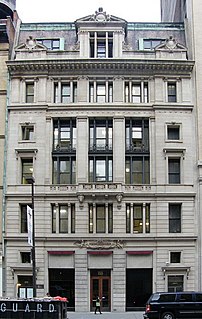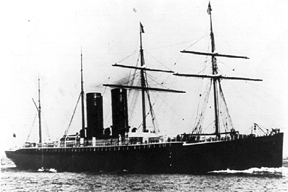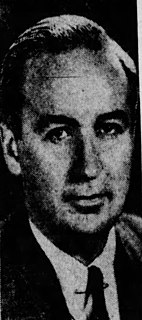Biography
He was the son of John Guion and Maria Howe of Westchester County, New York.

Westchester County is a county in the U.S. state of New York. It is the second-most populous county on the mainland of New York, after the Bronx, and the most populous county in the state north of New York City. According to the 2010 Census, the county had a population of 949,113, estimated to have increased by 3.3% to 980,244 by 2017. Situated in the Hudson Valley, Westchester covers an area of 450 square miles (1,200 km2), consisting of six cities, 19 towns, and 23 villages. Established in 1683, Westchester was named after the city of Chester, England. The county seat is the city of White Plains, while the most populous municipality in the county is the city of Yonkers, with an estimated 200,807 residents in 2016.
William had a younger brother Stephen Barker Guion which was one of the "Williams & Guion Black Star Line" founders.
Stephen Barker Guion with John Stanton Williams formed the Williams & Guion Black Star Line.

The Black Star Line was the name used by American sailing packets owned by the New York firm of Williams and Guion from 1848 to 1866. The line owned 18 ships on the Liverpool-Queenstown-New York route. The line was shut down in 1863 because of the success of newer, faster liners and the danger of transatlantic travel during the American Civil War.
William was married and had a son, whose name was also William Howe Guion II or William Howe Guion the Second (cerca 1830-1886). [2]
Stephen Barker Guion passed through the Atlantic Ocean to Liverpool in 1852 where he was acted as an agent of the "Williams & Guion Black Star Line". John Stanton Williams was another partner of the "Williams & Guion Black Star Line" in New York City. [3] [1]

The Atlantic Ocean is the second largest of the world's oceans, with an area of about 106,460,000 square kilometers. It covers approximately 20 percent of the Earth's surface and about 29 percent of its water surface area. It separates the "Old World" from the "New World".

Liverpool is a city and metropolitan borough in North West England, with an estimated population of 491,500. Its metropolitan area is the fifth-largest in the UK, with a population of 2.24 million in 2011. The local authority is Liverpool City Council, the most populous local government district in the metropolitan county of Merseyside and the largest in the Liverpool City Region.
1852 (MDCCCLII) was a leap year starting on Thursday of the Gregorian calendar and a leap year starting on Tuesday of the Julian calendar, the 1852nd year of the Common Era (CE) and Anno Domini (AD) designations, the 852nd year of the 2nd millennium, the 52nd year of the 19th century, and the 3rd year of the 1850s decade. As of the start of 1852, the Gregorian calendar was 12 days ahead of the Julian calendar, which remained in localized use until 1923.
The elder brother William Howe Guion joined the office in New York City in 1853. [3]

The City of New York, usually called either New York City (NYC) or simply New York (NY), is the most populous city in the United States. With an estimated 2018 population of 8,398,748 distributed over a land area of about 302.6 square miles (784 km2), New York is also the most densely populated major city in the United States. Located at the southern tip of the state of New York, the city is the center of the New York metropolitan area, the largest metropolitan area in the world by urban landmass and one of the world's most populous megacities, with an estimated 20,320,876 people in its 2017 Metropolitan Statistical Area and 23,876,155 residents in its Combined Statistical Area. A global power city, New York City has been described as the cultural, financial, and media capital of the world, and exerts a significant impact upon commerce, entertainment, research, technology, education, politics, tourism, art, fashion, and sports. The city's fast pace has inspired the term New York minute. Home to the headquarters of the United Nations, New York is an important center for international diplomacy.
In January 1884, William Howe Guion left the "Williams & Guion Black Star Line" and his nephew William Howe Guion, Jr., 36 years old, became a partner and the company received name "Guion & Co.". [3] [1] [4]







